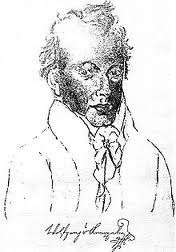-
(b.) -1734(d.)1804 March 26
Bio/Description
A Hungarian author and inventor with Irish ancestors, he was born in Pressburg, Kingdom of Hungary, Habsburg Empire (now Bratislava, Slovakia). His family settled in Pozsony/Pressburg in 1640. He is supposed to have been of Irish ancestry, but the name Kempelen itself is Hungarian. His father was of noble ancestry. He studied law and philosophy in his birthplace, and then in Győr, in Vienna and in later Rome, but Mathematics and Physics also interested him. He spoke German, Hungarian, Latin, French, Italian, and later also English. He started to work as a clerk in Vienna. He was most famous for his construction of The Turk, a chess-playing automaton, later revealed to be a hoax. It was described in an essay by Edgar Allan Poe, "Maelzel's Chess-Player". He also created a manually operated speaking machine, which was a genuine pioneering step in experimental phonetics. He constructed steam-engines, waterpumps, a pontoon bridge at Pozsony (1770), patented a steamturbine (1788/89) for mills, a typewriter for the blind (1772) Vienesse pianist Teresia Paradis, a theatre house in Buda (inaugurated 25th Oct. 1790.) (now Budapest) and the famous fountains at Sch?nbrunn Vienna. The reconstruction of the demolished Buda castle was also partly led by him. He was also a talented drawer, etcher and wrote poems and epigrams. He composed a singspiel, Andromeda and Perseus, performed in Vienna. The Wolfgang von Kempelen Computing Science History Prize was named in his honor.
-
Date of Birth:
1734 -
Date of Death:
1804 March 26 -
Gender:
Male -
Noted For:
The Wolfgang von Kempelen Computing Science History Prize was named in his honor, but he was most famous for his construction of The Turk, a chess-playing automaton, later revealed to be a hoax – He also created a manually operated speaking machine -
Category of Achievement:
-
More Info:


